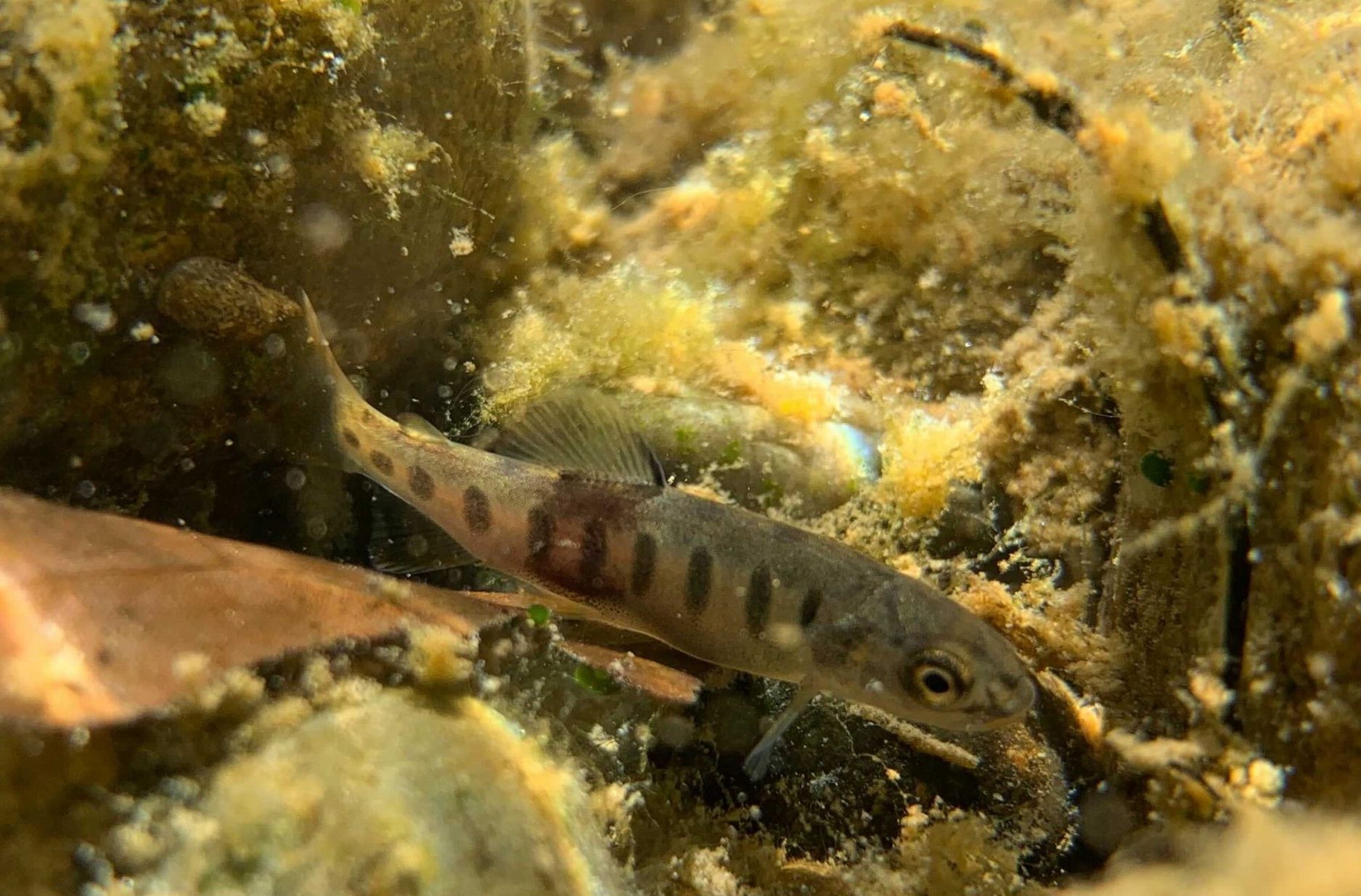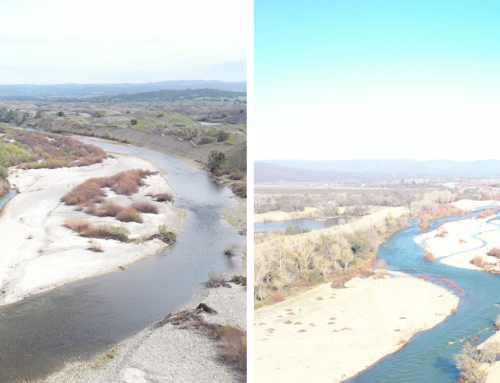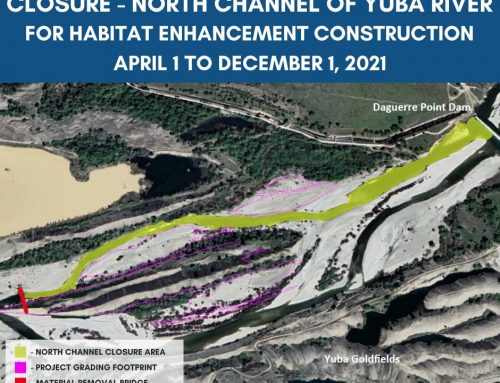Just a few months after Phase 1 of the Hallwood Floodplain and Side Channel Restoration Project was completed, juvenile Chinook salmon and O. mykiss (rainbow trout/steelhead) were documented utilizing the newly constructed side channels! Watch them in the videos below, captured by Cramer Fish Sciences biologist Philip Colombano.
Schools of juvenile Chinook salmon (left) and O. mykiss (right) using the newly constructed side channels within Phase 1 of the Hallwood Floodplain and Side Channel Restoratoin Project.
Due to the channelization that followed the Gold Rush, the lower Yuba River lacks adequate off-channel habitat, especially in low-flow years. The Project was engineered to provide off-channel habitats at a variety of flows, even in the face of drought.
Off-channel habitats—like floodplains and side channels—are important for juvenile salmon and steelhead because they provide protection from predators and energetically-taxing, high-velocity flows. In the winter and spring, when the juveniles are present in the system, off-channel habitats also provide warmer waters compared to the main channel; therefore, they increase productivity and metabolism creating the perfect rearing environment. As the project matures, vegetation will recruit along the margins of the side channels and in the floodplains, which will provide additional food input and shade from extreme temperatures during summer months and during drought conditions. Project partners Triangle Properties and the South Yuba River Citizens League planted over 2,000 willows, cottonwoods, and other riparian species across the Phase 1 footprint to jumpstart this process.
Data collected this year will enable comparison to pre-project data to quantify the benefits the Project has on the biological community.





